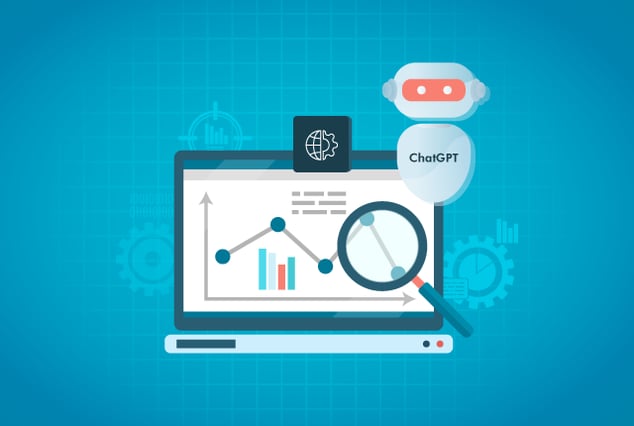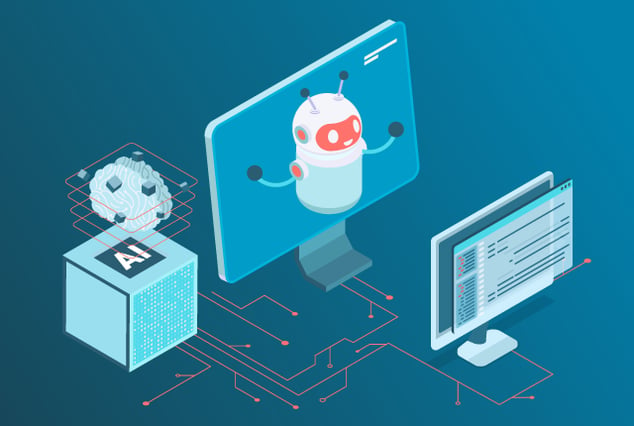
From improved textual understanding to real-time data resources, ChatGPT coding is a sure-shot way to make development easier and more efficient. If your engineering team hasn’t started using ChatGPT for coding it's important that you get started soon.
This blog explores the capabilities of ChatGPT for coding assistance while highlighting its limitations with context understanding and discussing various techniques and strategies that can help you overcome these challenges.
ChatGPT and its Coding Capabilities
ChatGPT, powered by OpenAI's GPT-3 language model, serves as an AI assistant for coding tasks. It offers code suggestions, completes snippets, and explains programming concepts. While its natural language interface is appealing, limitations may arise in understanding the context. To illustrate ChatGPT's limitations, consider the following examples:
-
Domain-specific Knowledge
When developers seek guidance from ChatGPT on optimizing an SQL query, the lack of domain-specific knowledge becomes evident. ChatGPT may suggest generic optimization techniques that may not be applicable to the specific database system in use.
-
Complex Programming Concepts
When generating code for implementing a deep neural network, ChatGPT can produce some code snippets, but it may not fully comprehend the intricacies involved in hyperparameter tuning or the nuances of activation functions.
To overcome these limitations, developers need to adopt strategies that enhance ChatGPT's contextual understanding in coding scenarios.
Overcoming Contextual Challenges in ChatGPT Coding
To address the challenges associated with contextual understanding in ChatGPT, developers can implement the following strategies:
-
Strategies for Improving Results from ChatGPT
To maximize its effectiveness and accuracy, developers should follow the following strategies:
- Provide Specific and Detailed Queries: Instead of asking vague questions, developers should provide specific details and context. This helps the model better understand the problem and provides accurate suggestions.
- Use Unambiguous Statements and Queries: To avoid misinterpretation, developers should use unambiguous statements or queries. Ambiguity can lead to incorrect or irrelevant responses.
- Double-Check Responses: It is essential not to blindly trust ChatGPT's suggestions. Developers should verify the responses by cross-referencing external sources, consulting documentation, or seeking expert advice when needed.
- Mention Relevant Contextual Information: Explicitly mentioning relevant contextual information during the conversation with ChatGPT helps the model to understand the problem better. This ensures that the model is aware of all the necessary details and can provide more accurate assistance.
- Clearly State Requirements and Break Them Down: When seeking assistance from ChatGPT, developers should clearly articulate their requirements and break them down into smaller, manageable tasks. Providing step-by-step guidance helps ChatGPT understand the context and generate more precise solutions. This promotes learning alongside coding assistance and helps understand the underlying concepts.
- Validate and Test Code Iteratively: To ensure correctness and functionality, it is crucial to validate and test the code iteratively. Developers can engage with ChatGPT throughout the iteration process, seeking guidance and verifying the code against expected outcomes. Continuous refinement ensures the quality of the final solution.
- Involve Human Expertise as Needed: While ChatGPT offers valuable assistance, there may be situations where human expertise is necessary. Developers should recognize the limitations of ChatGPT and involve human experts for complex coding problems or domain-specific knowledge.
-
Benefits of Strategies for Effective Interaction
- Enhanced Contextual Understanding: By following the strategies mentioned above, developers can enhance ChatGPT's contextual understanding of the coding problem. This results in more accurate and relevant suggestions, improving the overall coding experience.
- Learning Opportunity: Requesting explanations and step-by-step guidance from ChatGPT not only helps in solving the immediate coding problem but also promotes learning. Developers can gain insights into the underlying concepts and improve their coding skills over time.
- Reliable Code Validation: Validating and testing code iteratively, with ChatGPT's assistance, helps in identifying errors and ensuring the correctness of the code. This leads to more robust and reliable solutions, reducing the chances of unexpected issues in production.
- Time-saving and Efficiency: ChatGPT's coding assistance, when combined with effective strategies, can save time and increase efficiency. Developers can quickly get suggestions, validate code and iterate on solutions, resulting in faster development cycles.
- Access to Diverse Knowledge: ChatGPT has access to a vast amount of information and programming knowledge. By leveraging this knowledge through effective interaction strategies, developers can tap into diverse perspectives and insights, broadening their understanding of coding concepts and techniques.
- Integration with Real-Time Data Sources: Integrating ChatGPT with real-time data sources further enhances its contextual understanding and coding capabilities. By leveraging up-to-date information, such as the latest libraries, programming techniques, or relevant code repositories, developers can improve the accuracy of suggestions and code completions.
Considerations and Potential Challenges
The following are some challenges that might occur while using ChatGPT for coding:-
Dynamic Data Handling
Real-time data sources often involve dynamic data, which may change frequently. Developers need to consider strategies to handle such dynamic data and ensure suggestions and code completions remain up-to-date.
-
Data Privacy Concerns
Integrating real-time data sources raises data privacy concerns. Developers must ensure that user data is protected and appropriate measures are taken to maintain confidentiality when utilizing context in ChatGPT.
By carefully considering these factors and implementing effective strategies, developers can leverage the power of real-time data sources to augment ChatGPT's contextual understanding of coding.
Ensuring Data Privacy in ChatGPT's Contextual Understanding
While leveraging contextual information is crucial for improved coding assistance, ChatGPT data privacy concerns must be addressed. Users' data should be protected, and confidentiality should be maintained throughout the interaction with ChatGPT. The following are measures that need to be taken.
- Data Anonymization: Personally Identifiable Information (PII) should be removed or obfuscated from the conversation data. This includes names, addresses, contact details, and any other sensitive information.
- Encryption: ChatGPT platforms can encrypt conversation data both in transit and at rest to protect it from unauthorized access or interception.
- Access Controls: Limiting access to the conversation data to authorized personnel and implementing Role based access controls (RBAC) helps minimize the risk of data breaches.
- Data Retention Policies: Establishing policies to delete or anonymize conversation data after a certain period reduces the risk of data misuse and ensures compliance with privacy regulations.
- Consent and Transparency: Users should be informed about the data collected, its purpose and how it is stored and used. Obtaining explicit consent from users for data processing is crucial.
- User Control: Providing users with options to delete or manage their conversation data empowers them to maintain control over their privacy.
- Regular Security Audits: Conducting security audits and assessments helps identify vulnerabilities and ensure that appropriate security measures are in place.
Final Thoughts
ChatGPT's context understanding empowers coding assistance, improving productivity and tackling complex challenges. Despite these limitations, developers can optimize coding outcomes by following the strategies discussed. Diligence and critical thinking are key when utilizing ChatGPT. For expert advice and top-notch solutions, partner with QASource. Download our ChatGPT report to unlock the full potential of intelligent code generation today!


